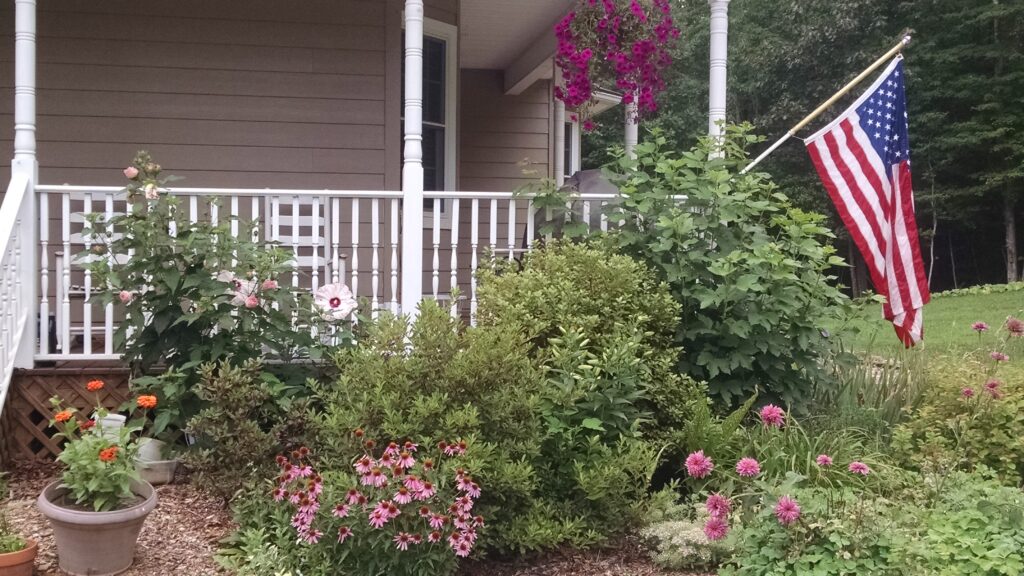This is the view I see as I come up my driveway.
Beautiful big hibiscus, a flowing hanging basket, double-blooming coneflowers and lots of lush green plants.
The view changes slightly when you get closer. I don’t spray my garden with chemicals, which means little worms that eat my coneflowers and Japanese beetles that feast on my hibiscus and canna lilies live in harmony with the many bees and butterflies that also enjoy the blooms.
 Sure, the hibiscus blooms have holes in them, and some of the flowers on my dwarf coneflower, ‘Little Annie’, only have a big round center, no pink surrounding them.
Sure, the hibiscus blooms have holes in them, and some of the flowers on my dwarf coneflower, ‘Little Annie’, only have a big round center, no pink surrounding them.
It’s not only flowers that end up slightly imperfect from cohabitation with the insect world, disease, and stress from the weather’s crazy ups and downs. Our vegetables end up in the same boat. Tomatoes with blossom-end rot are all-to-familiar to vegetable gardeners. And what about spots on beans, or worms in apples? When has that ever made you decide not to eat the produce from your garden, or think twice about cutting flowers to bring them indoors?
When it’s ours, the plants, fruits and vegetables we’ve lovingly cared for, nursing them through dry spells and flicking off Japanese beetles, we’re proud of the end result, no matter how imperfect it might look to the passerby. After all, beauty is in the eye of the beholder, right?
It turns out, it’s not only us gardeners who are embracing the imperfections among us. A movement is underway to educate consumers that picking up an apple with a few blemishes or cauliflower that’s a little yellowish is just as good as the “perfect” food we’re used to. A venture called Imperfect Produce is helping educate Americans about produce with blemishes and that it’s not only okay, but good for the food supply to not let it go to waste. Other organizations are helping encourage farmers to set aside the imperfect produce for food banks rather than just tossing it in the garbage pile. And Raley’s, a supermarket chain in California, is launching a campaign to educate consumers about imperfect produce and market some of its own through a pilot program they’re calling “Real Good.”
One of the drivers for this movement is the amount of food that goes to waste. According to the Natural Resources Defense Council, anywhere from 1 to 30 percent of food grown by farmers doesn’t even get to the grocery store, contributing to the $2.6 trillion in food waste in the United States each year.
Who knows where all of this will lead. I just like the fact that people are thinking about it. I know my hibiscus gets eaten by Japanese beetles and my cherry tomatoes have spots on them probably because I shun the use of chemicals on my garden. And while I’m not able to get on any type of soapbox, because I don’t buy organic foods for my family (unless they happen to be the same price or less as their non-organic counterpart), I am all for using less chemicals. So even though I know fertilizers and pesticides are part of what makes our big farms so productive, maybe there’s hope that if we all start accepting produce that’s just a little less than perfect, farmers will become less dependent on chemicals. And that could be a good thing.


